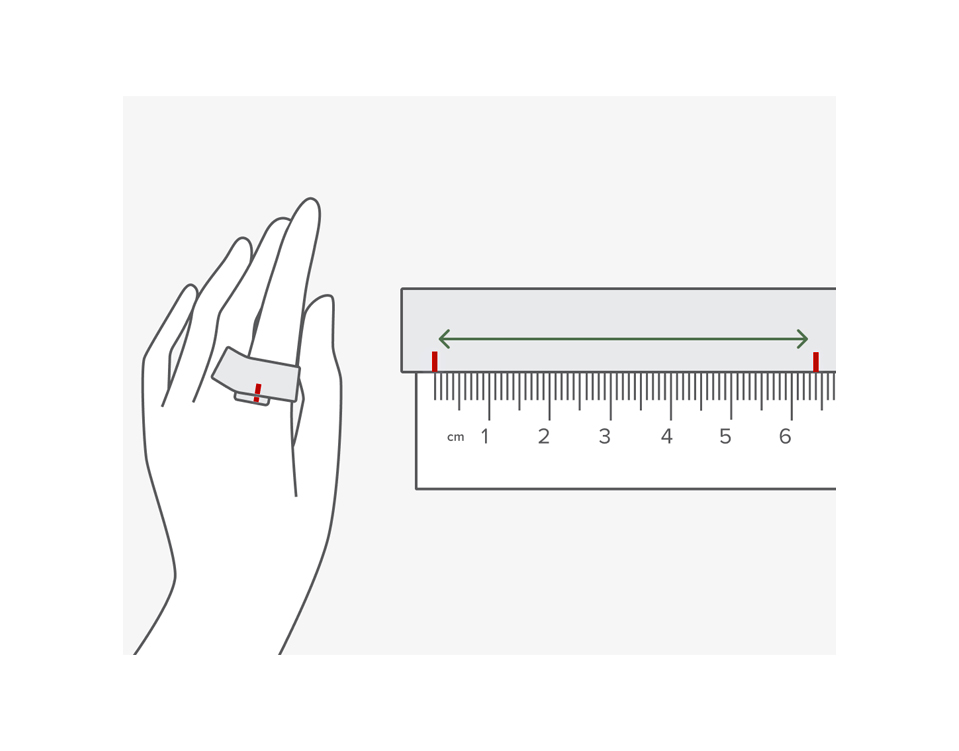When it comes to buying a ring, whether it’s for yourself or a loved one, ensuring the right size is crucial. If you’re not sure what size to order, a ring size chart can be your best friend. Knowing how to measure your finger correctly and understanding the different ring sizes can help avoid the frustration of purchasing a ring that doesn’t fit. This article will guide you on how to use a ring size chart and ensure that you choose the perfect size every time.
Understanding the Importance of a Ring Size Chart
A ring size chart serves as a valuable tool to help you find the correct ring size. Without it, finding a ring that fits perfectly can become a guessing game. A ring size chart typically includes measurements for different ring sizes, usually from size 3 to 15, and corresponds to either inches or millimeters. These measurements reflect the circumference or diameter of your finger. For the best fit, you’ll need to compare your finger’s measurements with those listed on the chart.
By using a ring size chart, you can avoid the inconvenience of having to exchange or resize a ring after purchasing it. It provides a simple, reliable way to find a size that will comfortably fit your finger without being too loose or too tight.
How to Measure Your Finger for the Right Size
Using a ring size chart starts with knowing how to measure your finger accurately. There are different methods to do this, and the choice of method often depends on the tools you have at hand. One common technique involves wrapping a piece of string or paper around the base of your finger. Mark the spot where the string or paper overlaps and measure the length with a ruler. This length corresponds to the circumference of your finger, which you can then match to the measurements on the ring size chart.
Another method involves using a ring that already fits you well. Simply measure the inner diameter of the ring with a ruler or caliper, and compare that measurement to the diameter sizes listed on the ring size chart. This method can be especially helpful if you are buying a ring as a gift for someone else and you don’t have access to their finger for measurement.
Different Types of Ring Size Charts
Ring size charts can vary slightly based on the country or region you are in. For example, in the United States, ring sizes are typically measured in numerical values, ranging from size 3 to size 15. Meanwhile, other countries, such as those in Europe, may use a different measurement system, such as using letters or a numerical system based on the inner circumference of the ring.
In the UK, ring sizes are often labeled with letters, where each letter corresponds to a specific finger size. In Japan, sizes are measured in millimeters, while in other places, a combination of the two systems may be used. It’s important to know which type of chart to use, as conversions between these different systems are not always straightforward.
When using a ring size chart, make sure to double-check the chart’s origin and adjust for any regional differences. Many online stores offer a converter tool that allows you to easily switch between size systems.
Tips for Getting an Accurate Measurement
To get the most accurate reading when using a lab made diamonds, it’s essential to measure your finger at the right time of day. Fingers can change size throughout the day, typically being smaller in the morning and slightly larger in the evening. It’s best to measure your finger in the late afternoon or evening, as this is when your fingers are at their largest.
Also, be mindful of temperature. Cold weather can cause your fingers to shrink, while warm weather can make them expand. If you’re measuring in cold weather, it’s recommended to wait until your fingers return to their normal size before measuring.
Make sure the string or paper is snug but not tight when measuring. A measurement that’s too tight will result in a ring that’s too small, while a measurement that’s too loose may lead to a size that’s too big. Taking a few measurements and averaging them can help ensure accuracy.
Common Mistakes to Avoid When Using a Ring Size Chart
When using a ring size chart, there are a few common mistakes to avoid. One of the biggest mistakes is measuring your finger incorrectly. For example, if you don’t take into account changes in finger size during the day or during different weather conditions, you may end up with a size that doesn’t fit as well as you expected.
Another mistake is relying on an old measurement. As your body changes over time, so can the size of your fingers. If you haven’t had your ring size measured recently, it’s a good idea to measure your finger again before buying a new ring.
Finally, not considering the ring style can lead to sizing issues. Some ring styles, such as wide bands, can feel tighter than thin bands, even if they are the same size. When purchasing a ring, take the style into account, as it can affect how the ring fits on your finger.
Conclusion
A ring size chart is a simple yet essential tool for finding the perfect fit when purchasing rings. By understanding how to measure your finger accurately, choosing the right chart for your region, and avoiding common mistakes, you can ensure that the ring you buy will be both comfortable and stylish. Whether you are buying a gift or treating yourself, using a ring size chart will help you find a ring that fits like a glove. Keep in mind the timing of your measurement and the style of the ring, and you’ll be on your way to purchasing a ring that’s just the right size.

